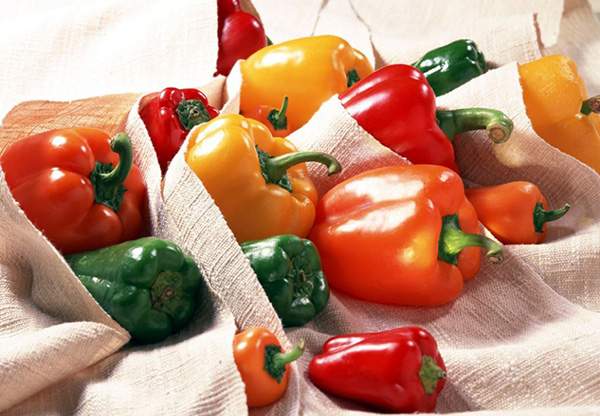Can’t decide which bell pepper to add to your salad or top your pizza with? You’re in luck — this article is for you. Once you’re through with this, you will have a better idea on the differences between green, red and yellow bell peppers other than their truly eye-catching colors. Continue reading!
First and foremost, all bell peppers that you spot at your favorite grocery store or local farmers’ market came from the same plant (with the exception of a few) but were harvested at varying levels of ripeness. So in other words, bell peppers are one and the same regardless of the bright colors they are sporting.
However, there are also differences among green, red and yellow bell peppers when it comes to the taste and nutritional profile. Does this mean that one bell pepper is better than the other? The answer is yes and no. Each one has certain perks to offer, and each one is perfect for varying tastes or recipes.
Before we tackle the things that set apart different colored bell peppers from one another, there’s one important matter that you need to know: all green bell peppers eventually become yellow bell peppers, and all yellow bell peppers are predestined to become red bell peppers (though some green ones end up as yellow ones and stop there).
In a nutshell, the color of bell peppers depends on the time of harvesting. Bell peppers that are harvested before becoming ripe boast of a green color, and bell peppers that are collected when they are completely ripe come with a red color — that’s basically the logic behind the various coloration of bell peppers.
Now let’s tackle some of the differences bell peppers have other than their beautiful colors:
Green Bell Peppers
Since green bell peppers spend the least amount of time planted, they are usually cheaper. Also, it can be expected for them to have a slightly bitter taste since they are unripe bell peppers.
Unfortunately, green bell peppers are devoid of some nutrients that show up only when bell peppers are allowed to completely ripe. However, don’t assume that green bell peppers are unhealthy — the fact that they boast of that stunning green color means that they are rich in chlorophyll. Green bell peppers also contain potassium which is good for your heart, plus there are also some vitamins A and C around.
Red Bell Peppers
When green bell peppers are permitted to ripen, they end up as red bell peppers. Because the red varieties are bell peppers that are allowed to completely mature, they posses that characteristic sweet taste.
The nicest thing about red bell peppers is they contain loads of vitamins A, lutein and zeaxanthin — a quick look at the coloration of red bell peppers will easily reveal that fact! All of the said nutrients help keep both your eyes and vision in an excellent shape. According to experts, the vitamin C content of red bell peppers is about one and a half times higher than the amount in green bell peppers.
Yellow Bell Peppers
If you are looking to enjoy the best of both worlds, then yellow bell peppers are the ones for you. Basically, yellow ones are bell peppers harvested somewhere in between being immature and fully ripe.
Needless to say, the nutritional content of yellow bell peppers is slightly better than that of green bell peppers, but a little less than that of red bell peppers. When it comes to the flavor, yellow bell peppers are perfect for people who don’t really like the bitter taste associated with green bell peppers, as well as the sweetness that red bell peppers pack.












